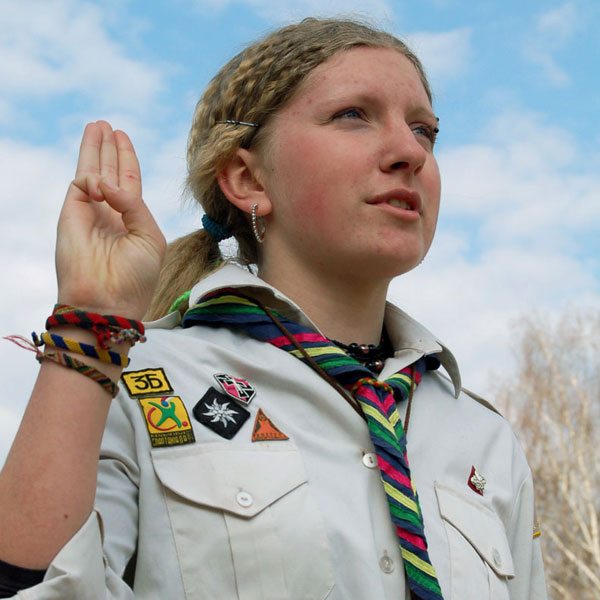
August 23, 2017; Washington Post
What should the scouting experience provide for the youth of the United States? That’s a question both the Boy Scouts and the Girl Scouts of America have been grappling with recently, but the boys may have just undercut the girls, and not necessarily for the best.
The Boy Scouts (BSA) announced in May that they would consider opening more of their programs to girls; in the months since then, they’ve considered allowing girls to join the troops as full members. A statement from the Boy Scouts’ director of national communications Effie Delimarkos said, “In evaluating the possibility of serving the whole family, we’ve been having conversations with our members and volunteers to see how to make Scouting accessible for families.”
The Girl Scouts (GSUSA) declared themselves “disappointed in the lack of transparency as we learned that you are surreptitiously testing the appeal of a girls’ offering to millennial parents,” in a letter Girl Scouts President Kathy Hopinkah Hannan wrote to Boy Scouts President Randall Stephenson, which was made public by BuzzFeed.
GSUSA accused BSA of trying to broaden their recruitment base to make up for declining membership. While the Boy Scouts have seen a precipitous decline in numbers, the Girl Scouts aren’t doing much better. Hopinkah Hannan’s letter recommended that “Boy Scouts should instead take steps to ensure that they are expanding the scope of their programming to all boys, including those who BSA has historically underserved and underrepresented, such as African American and Latino boys.” BSA has been open to all races since 1916, before the law required integration or equal opportunity, but scouts of color have “not seen the same opportunities for leadership in their communities as they progressed through the Scouts,” according to the African American Registry.
The Boy Scouts’ declining numbers can likely also be attributed to the proliferation of extracurricular options available to young people and a backlash against the other unpopular positions BSA has held, such as a strong resistance to allowing gay scouts. Opening the organization to girls could be seen as a gesture toward inclusion, albeit a strange one, meant to improve BSA’s public profile.
Sign up for our free newsletters
Subscribe to NPQ's newsletters to have our top stories delivered directly to your inbox.
By signing up, you agree to our privacy policy and terms of use, and to receive messages from NPQ and our partners.
Despite their similar names and missions, the Boy and Girl Scouts are very different organizations. GSUSA has lobbied for women’s education and health initiatives, while BSA explicitly bans advocacy. GSUSA has also been inclusive of gay and transgender members, and since 1993 they have declared themselves open to all beliefs, unlike the Boy Scouts, who reject atheist or agnostic members. The Boy Scouts famously had to be forced to include gay and transgender scouts, and as the Atlantic points out, “the BSA tends to wrap itself around existing power structures—so that, for instance, scout troops are chartered by community organizations, most frequently churches.”
Given these differences, perhaps it’s not surprising that they have responded differently to their declining enrollment. GSUSA announced 23 new leadership badges this year, most of them STEM- or conservation-based. Hopinkah Hannan wrote, “Over the last century, GSUSA has adapted to the changing environment, always prioritizing the health, safety and well-being of girls. For BSA to explore a program for girls without such priorities is reckless.”
Technically, allowing girls to join isn’t opposed to the BSA’s mission, which is to prepare “every eligible youth in America to become a responsible, participating citizen and leader.” But is it in the best interest of girls to join an organization that has to be dragged kicking and screaming into equal inclusion? Where is the confirmation that BSA has considered what’s best for girls, and how they are molded into leaders? Evidence shows that many girls thrive in female-only environments, where all leadership roles are filled by women and there is a safe space for them to discuss crises of confidence and other issues.
Many co-ed youth scouting or scout-like programs exist, such as Adventure Scouts USA or the BSA’s own Venturing program for older teens. These programs teach outdoor skills and provide adventurous nature experiences for their members, but unlike the Scouts programs, they aren’t explicitly designed as lifelong leadership development.
Should the Boy Scouts open up to girls? Are they sacrificing the potential best interests of girls to their own potential PR gain, or are they genuinely interested in inclusive growth? If this represents a strong departure from their historic roots, is that what’s best for tomorrow’s leaders?—Erin Rubin












